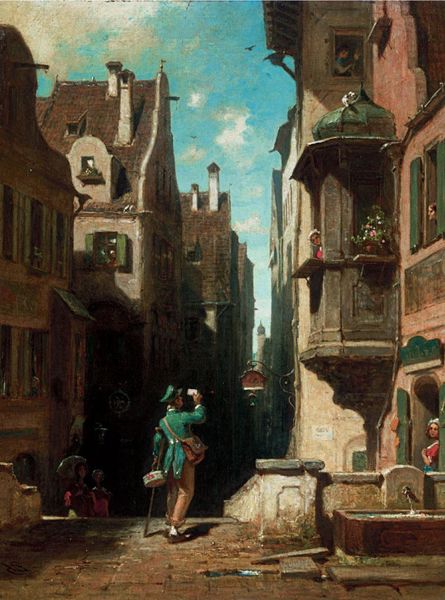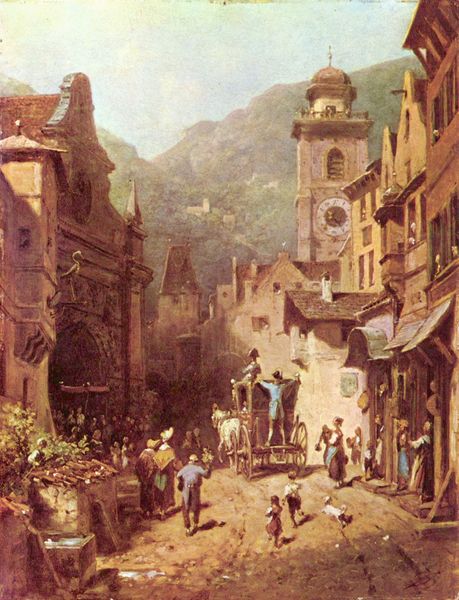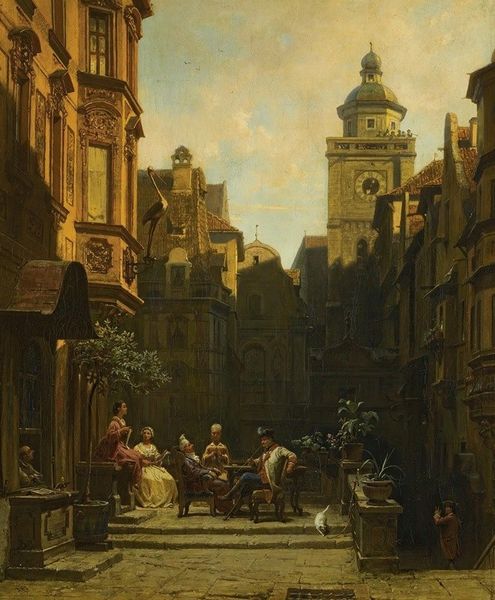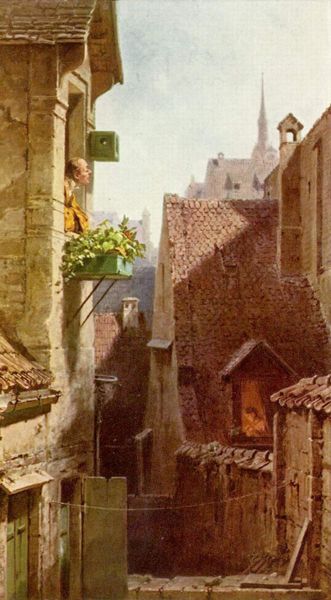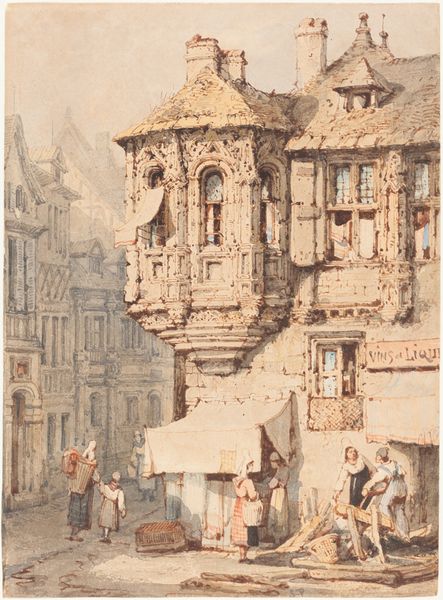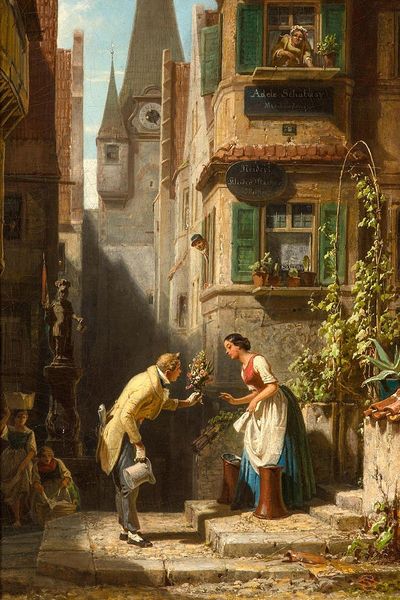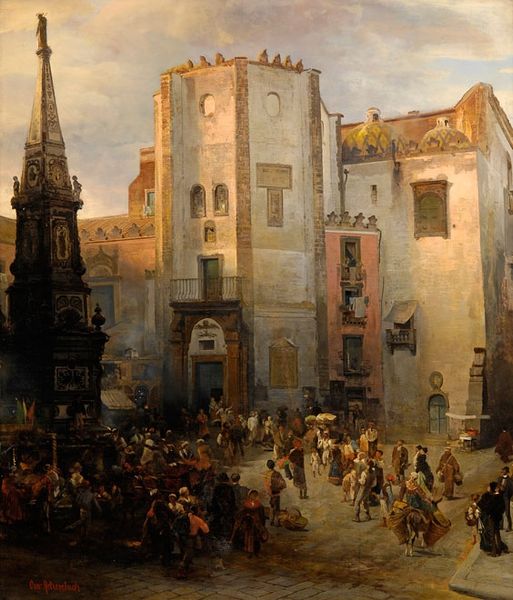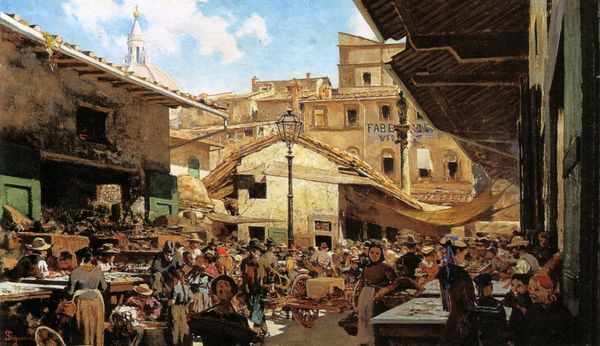
Dimensions: 56.5 x 35 cm
Copyright: Public domain
Curator: Look at the density and the warmth of the palette used to render this cityscape. Carl Spitzweg's "Arts and Science," painted in 1880, presents a vibrant urban scene teeming with detail. Editor: Yes, my first impression is one of controlled chaos, almost claustrophobic in its detail. You can almost smell the pigments on the drying canvases mixed with whatever is cooking behind the closed shutters and tiled roof. What do you see there? Oil paint? Canvas? Curator: Indeed. Spitzweg’s background situates him perfectly as he captures the pulse of daily life. We can almost visualize Spitzweg working in his studio from this time. This perspective allows Spitzweg to emphasize social interactions. We see figures engaging in trade, passersby pausing to examine the works of art, children scampering across rooftops. How would you unpack the artistic approach here? Editor: Well, he's definitely engaged with materials available and the economic context. The close-packed arrangement of stalls and the somewhat worn facades speaks to both the artistic creation but also an implicit statement about consumer culture. It makes you wonder about the materials used to create this "arts and science" here—where they were sourced, who crafted them, and how accessible they were. The pigments were relatively new. What sociopolitical commentary is being rendered? Curator: That's astute. The "arts" themselves are clearly on display for public consumption, but the "science," perhaps, remains hidden, embedded in the very materials you highlight and the modes of production they represent. Editor: The city buildings aren't pristine but rather aged. This speaks to urban development within the frame, what is accessible within capitalism versus Romantic artmaking. It's a fantastic image that underscores not just creativity, but the commerce and social exchanges fueling the artistic engine and who has access. What more can we uncover? Curator: To be sure! This moment marks an intersection of art, science, and everyday life. And it showcases the growing availability of materials but also the labor inherent in it all. Editor: Precisely. Looking closely at these visual traces is a strong reminder of how paintings serve as an insightful intersection to the human story of social life. Curator: Absolutely! Spitzweg gives us an enchanting, nuanced portrait of that interplay of urban life in that very instant.
Comments
No comments
Be the first to comment and join the conversation on the ultimate creative platform.

